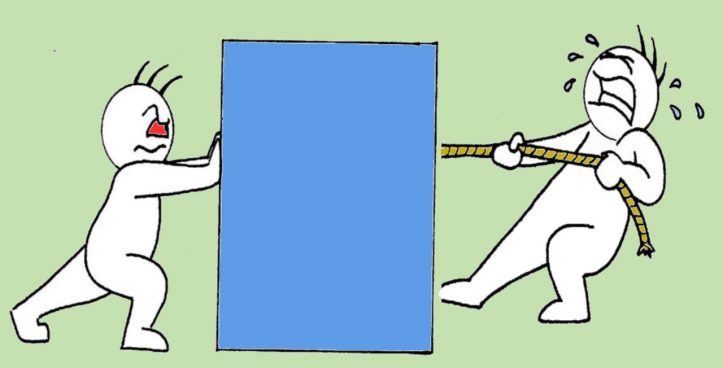What is a Push or Pull? A push-pull definition is an action wherein an object resists being moved while another object allows the movement. It is also known as a dynamic friction. Workers utilize various pushing and pulling behaviors in an assortment of tasks, including: moving objects by hand moving objects like rollers, drums, and pallet racks sliding items on a surface (like tables, floors, and so on.) and operating tools
The definition of a push or pull is: force applied to remove a particular immovable object A push is a exerted force that acts upon an object A pull is an irresistible force that acts upon an immovable object A pull system is a system that controls one or more motions or force components on an object A push/pull system can include one or more components: a motor, gear, disc, or arm. A motor is a device that provides force. Gear is any physical force that creates a motion. Disc is a round-shaped element with axial rotation. Arm is an equipment part that helps to lift or move materials.

How do I identify them? A push is any exerted force application to remove an object A pull is an irresistible force that acts upon an object Pushing forces are usually applied during lifting and moving. Pulling forces are usually applied during lowering and moving.
Defining the difference between these terms can be difficult because both involve applying downward pressure or pulling on an object. A push occurs when downward pressure or pulling is applied and a pull occurs when upward pressure or pulling is applied. In our example, if someone pushes down on your chair you will feel your legs getting pulled forward toward your body and your back against the table. If someone pulls up your chair, you will feel your shoulders go back and your head moves back toward the chair.
Pushing and Pulling – What is a Push? The key concept to understanding the difference between a push and a pull is determining whether there is a net upward pressure or pull being applied. There are two types of pushes – direct and non-direct. A push can only push something if it is not being driven downward by a force. A pull cannot be pushed – it must be driven downward.
The two types of pushes/pulls are: a direct push and a pull. A push requires that an object is pushed while a pull requires that an object be pulled. A push-pull relationship can be seen in the way a driver makes the car start or stop, a boat begins to move, and the basket of a golfer’s golf ball begins to spin. An example of a pull would be the process by which a vehicle’s brake fluid is drained from the system or the power steering pump is moved to a different location in a vehicle.
When using model techniques to understand these concepts, first ask yourself these questions: Is the push or pull directed to me? Is the “push” or “pull” directed to someone else? Can I accomplish what I want to accomplish? Do I have control over the outcome? Can I alter the direction of the pulling force? Are there any alternatives to my pushing or pulling?
Answering these questions will help you determine how to behave. For example, if you push a pencil forcefully downward, it will push against a wall, which will push against someone’s leg, causing the pencil to fall. If you pull back on your muscle, it will cause your arm to extend into the air, causing the pencil to fall toward the floor. The most effective way to change the direction of any forces is to use the appropriate tool.